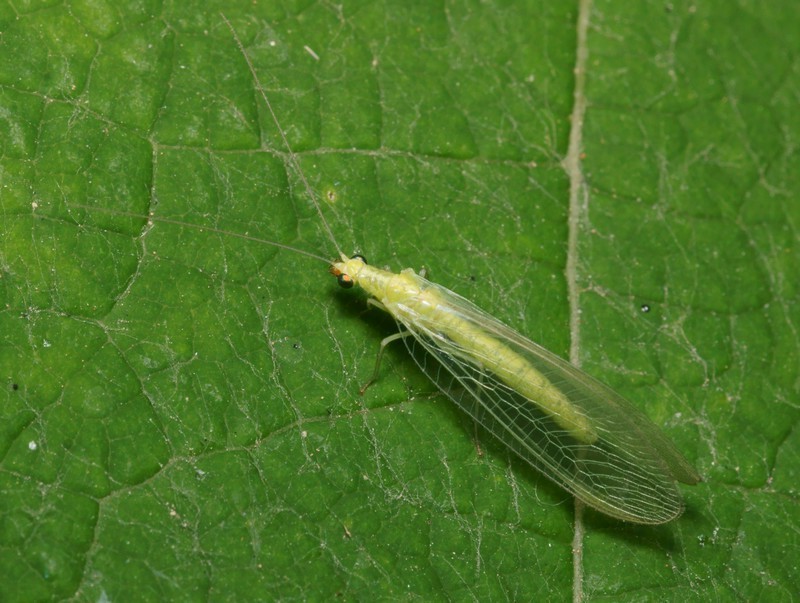Chrysoperla lucasina
(Chrysoperla lucasina)

Description
Chrysoperla lucasina is a species of neuropteran of the family Chrysopidae (subfamily Chrysopinae). They are found mainly in the United Kingdom, the Czech Republic, France, Germany, Greece, Italy, Spain, Portugal, Switzerland, in western Asia and northern Africa. C. lucasina can be distinguished from other members of the carnea-group of the genus Chrysoperla by subtle and variable morphological attributes. Adults can be encountered from late Spring through mid-Autumn. They are polyphagous, feeding on pollen and nectar of various herbaceous flowering plants (mainly Brassicaceae, Graminaceae, Apiaceae, and Asteraceae), as well as on honeydew, their preferred diet in Autumn. After the feeding period, they fly near colonies of aphids, where they breed and the females lay eggs. Unlike the adults, the larvae are fearsome predators; consequently, these insects are used for the biological pest control of aphids and other small arthropods. The adult insects hibernate in winter. Chrysoperla is a genus of common green lacewings in the neuropteran family Chrysopidae. Therein they belong to the Chrysopini, the largest tribe of subfamily Chrysopinae. Their larvae are predatory and feed on aphids, and members of this genus have been used in biological pest control. Chrysoperla is one of several green lacewing genera with adults having a pale, yellowish stripe down the middle of the body. It is typically separated from other such genera by the short intramedian cell (im), which doesn't overlap the first crossvein from the radial sector. This genus, however, is defined predominantly based on male genitalia. Chrysoperla is one of six genera possessing an arcuate tignum and three genera to lack a gonapsis. It is distinguished from all other green lacewing genera by the presence of spinellae on the gonosaccus in the male genitalia. Chrysoperla species may be identical in terms of morphology, but can be readily separated based on the vibration signals used to attract mates. For example, the southern European C. mediterranea looks almost identical to its northern relative C. carnea, but their courtship "songs" are very different; individuals of one species will not react to the other's vibrations.
Taxonomic tree:







